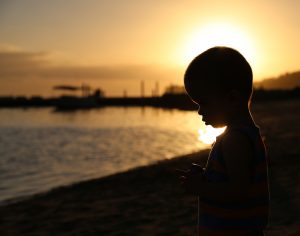For over a year, Sabir Shah, a madrassa student, was sexually abused by an influential religious cleric in Pakistan’s populous city of Lahore. In a video spread on social media and filmed by Shah himself, Mufti Azizur Rehman – a religious leader belonging to the conservative Jamiat Ulema-e-Islam-Fazl (JUI-F) party, who confessed to his crime – could be seen involved in inappropriate acts with the victim, his student at the seminary.
The incident sent shockwaves across the country, with many citizens demanding strict punishment for the vile act. Pakistan’s Special Representative for the Prime Minister on Religious Affairs Tahir Mehmood Ashrafi even said that Rehman should be “hanged to make an example of those who sexually abuse children,” a demand that echoed the views of many Pakistanis on burgeoning cases of abuse against minors and adolescents, both male and female, within seminaries and in society.
This further revived debate on the role of madrassas as hotbeds of rape and sexual molestation and exploitation of juveniles and young adults. Recently, more old and new videos involving clerics engaged in sexual abuse, including one who is part of a Shia Ulema, have surfaced online. The on-record incidents point toward a deep-rooted problem, one that has existed for a while but been willfully overlooked by society.
In Sindh’s Kandiaro city, a 12-year-old boy was raped by his religious teacher last year. In Karachi, a cleric was arrested for raping a teenage boy. The same year an 18-year-old seminary student was caught raping a 7-year-old on a CCTV camera.
In March 2021, a court in Peshawar convicted a cleric of sexually assaulting an 8-year-old girl almost two years ago. More recently, in Punjab’s Chakwal town, a madrassa prayer leader raped four minor girls in a room adjacent to a mosque. In July, another minor seminary student was gang-raped by four men.
Despite the evidence of a widespread problem, in many rural parts of the country, any sexual assault allegation toward clerics is perceived as an “attack on Islam and its custodians.” Often police officials are not fully sensitized to children’s rights and instead have been involved in colluding with influential madrassas to silence the victims and their families by offering an apology or “blood money.” An Associated Press investigation in 2017 found dozens of police reports pertaining to sexual harassment, rape, and physical abuse by religious clerics teaching in madrassas throughout Pakistan.
This corresponds with increasing number of child abuse cases in the country more recently. Sahil, an organization working for child protection in Pakistan, reported an increase in the number of child abuse cases in 2020 and said its data shows that “in a day, more than 8 children are abused [in Pakistan].” In the reported cases, 51 percent of the victims were girls and 49 percent boys, while the age group 6-15 was more vulnerable, the organization’s findings showed. These reported incidents included “985 cases of sodomy, 787 of rape, 89 cases of pornography and child sexual abuse, and 80 cases of murder after child sexual abuse, whereas 834 cases reported were of abduction in 2020.”
The subject of child abuse and child protection laws came into focus in Pakistan after the 2015 Kasur pornography scandal, followed by the brutal rape and murder of 7-year-old Zainab Ansari in 2018. The latter case triggered massive outrage and led to the establishment of the Zainab Alert, Response and Recovery Agency (ZARRA), in the forthcoming years, albeit quite late.
Despite nascent efforts at child protection, the role of madrassas in these crimes has been largely unaddressed. Discussions on the issue are missing from the national discourse, given the sensitivity around religious leaders, their concocted pious image and influence.
The closest Pakistan has come to regulating its madrassas has been through the current ruling party’s initiative of bringing them under the Single National Curriculum umbrella. Many clerics in Pakistan are notorious for hate-mongering and propagating intolerance against the marginalized communities. Critics and civil society members, however, are of the view that instead of “reforming” madrassas and promoting pluralistic values, the Single National Curriculum is more religiously inclined and aimed at achieving the state’s ideological motives.
As far as the safety of children in madrassas is concerned, an integrated approach to curbing these crimes – involving the legal system, psychologists, NGOs, parents, and children themselves, and making their cooperation more effective – remains missing. No official child protection policy in these religious schools exists, making matters worse and leaving Pakistan’s children at the mercy of predators.
A social construct where speaking up against abuse is a taboo, combined with grassroots poverty, have combined to create an unsafe environment for out-of-school children, in particular, who are often pushed into madrassas. It’s estimated that Pakistan has over 35,000 registered and unregistered Islamic schools, with the bulk of students coming from the country’s poor and rural populations. Perhaps addressing structural inequalities is the first step in the right direction.

































